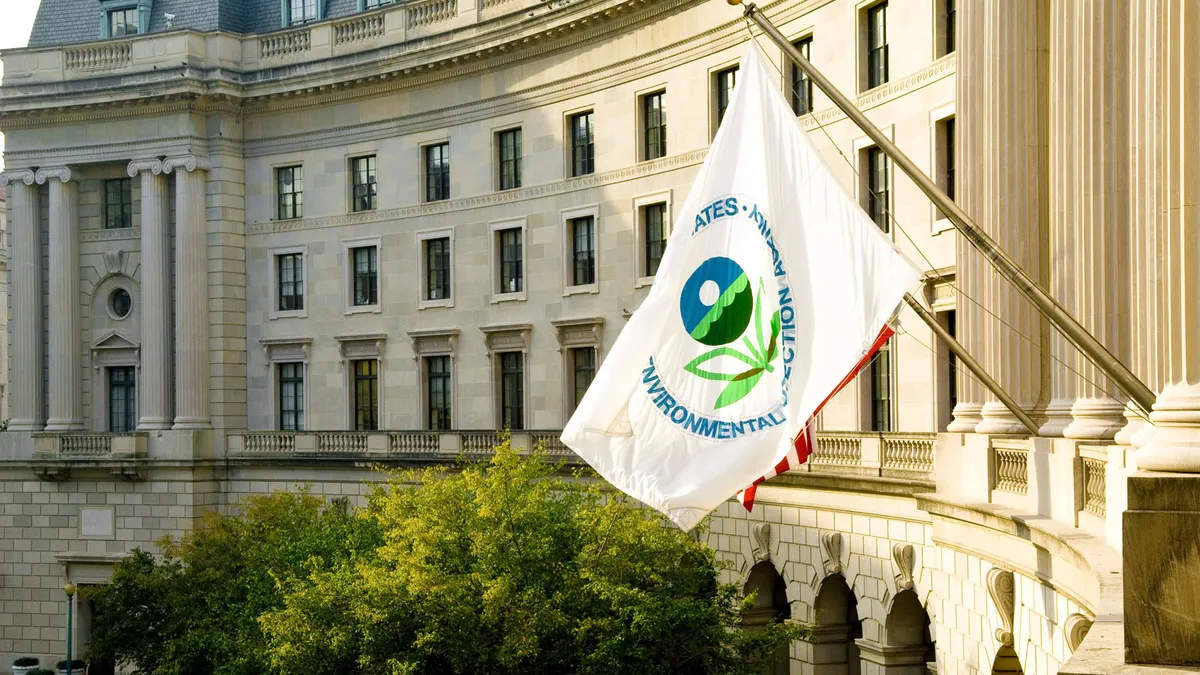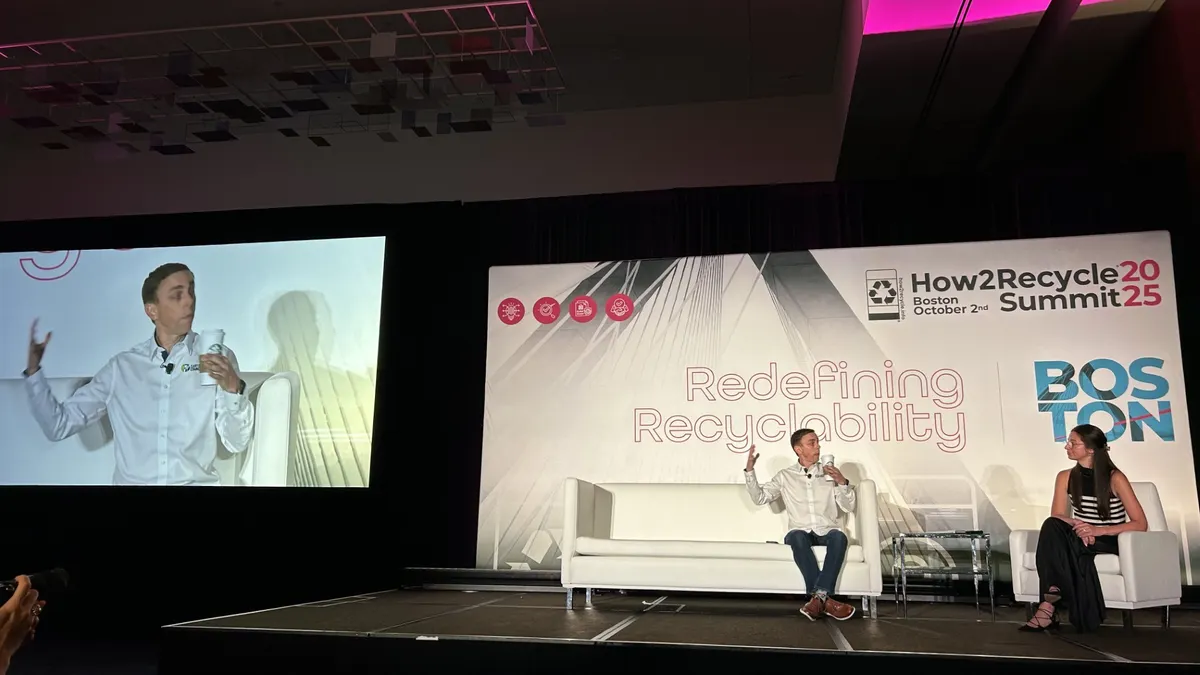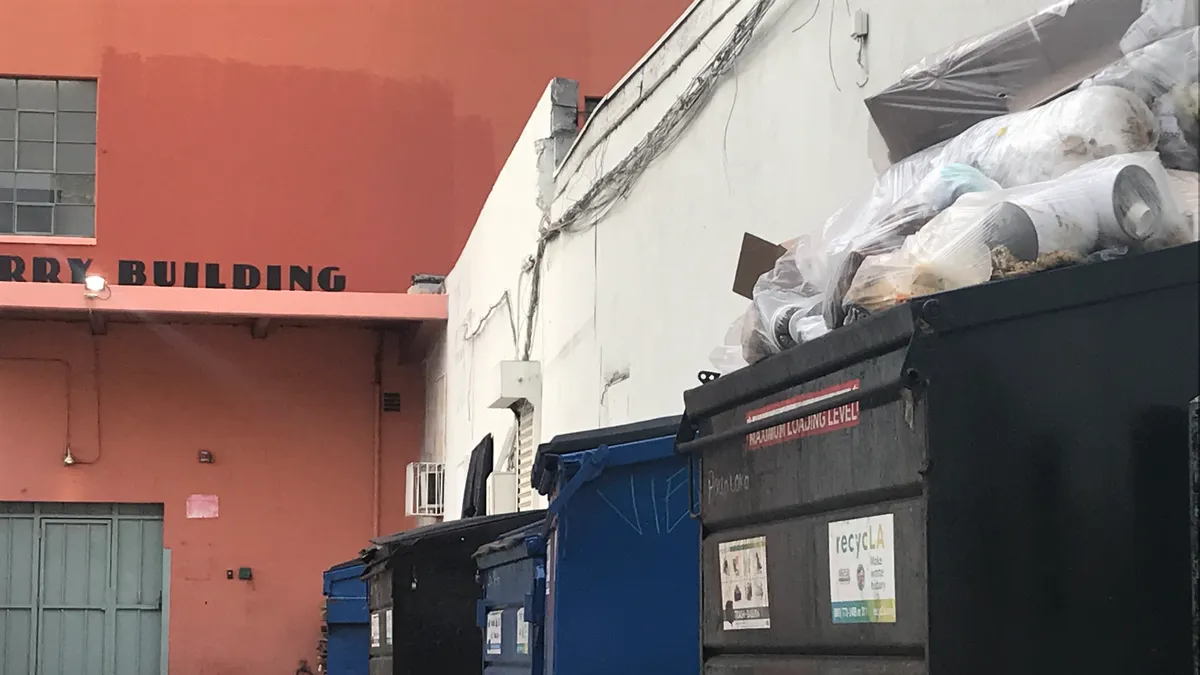The U.S. EPA is evaluating two well-known tools in materials management policy — the waste management hierarchy and the waste reduction model (known as WARM) — with the potential for changes in how it assesses certain disposal technologies.
According to an Oct. 4 letter from the anti-incinerator Energy Justice Network, co-signed by more than 270 other advocacy groups, the EPA’s Office of Land and Emergency Management has been reviewing both items in recent months. A note on the EPA’s hierarchy page, which outlines the well-known list of materials management options from source reduction through disposal, now says the agency is reviewing it “to determine if potential changes should be made based on the latest available data and information.”
These EPA tools are advisory, with no specific regulatory role, but both have been commonly-cited elements of waste policy for decades. Changes to either would be a notable move by the agency that could have ripple effects in state and local policy discussions.
The agency said this is all part of broader research work, though did not respond to specific questions about what led it to post the note, the nature of the data it was referencing or what aspects of the hierarchy might change.
“The waste hierarchy was created several decades ago and has served as a general guide to materials management. EPA’s upcoming research plan includes work that will help us consider whether potential changes to the hierarchy are necessary,” said an agency spokesperson in a statement. “We are interested in offering better resource conservation and environmental impact reduction through more informed materials management decisions, including community-based decisions.”
Those research plans, which outline work the agency’s Office of Research and Development will conduct through FY26, contain brief mentions of upcoming waste initiatives.
An “Air, Climate, and Energy” plan mentions that “improved data is needed from waste management within the U.S.,” including “landfills and waste incineration and other sectors in the GHG Inventory.” A “Sustainable and Healthy Communities” plan mentions how upcoming changes to a broader sustainability calculation model could affect multiple tools, such as WARM. That plan also mentions a range of upcoming materials management research, including a focus on climate change and environmental justice.
According to Mike Ewall, executive director of the Energy Justice Network, advocates have met with the EPA’s Carlton Waterhouse about these issues multiple times since last year. Waterhouse — deputy assistant administrator of OLEM — has brought a heightened focus on environmental justice to his time at the agency.
The EPA "admitted to us back in March that they have no citations to support putting incineration above landfilling on the hierarchy,” said Ewall.
The groups also believe that WARM has a “bias in favor of incineration.” Their recent letter is addressed to the Council on Environmental Quality because a recent report from that group restated the EPA’s waste hierarchy after the agency had added its disclaimer this summer. In addition, their letter calls for updated emissions standards for such facilities and greater regulation of residual ash, among other measures to regulate an industry they describe as an environmental justice concern and one that is “past its prime.”
Energy Justice Network and related groups would prefer to see the EPA use a hierarchy adopted by the Zero Waste International Alliance, which calls for biological treatment before landfilling residual material and calls any form of incineration “unacceptable.”
While the number of mass burn facilities has declined in the U.S. in recent years, as landfill development continues to expand, dozens of such facilities remain active and are central elements of waste infrastructure in certain regions. Beyond advocacy by the companies or local governments that operate these facilities, the sector’s presence in the national waste policy discussion is less robust than in previous years.
A newer U.S. group, the Institute for Energy and Resource Management, has been working to promote the technology as part of an integrated system where recycling is maximized and residual waste is processed via thermal treatment. The group’s team of advisers, including a range of European waste professionals, said it was alarmed by the possibility that EPA could change the hierarchy and reiterated its calls for landfills to be phased out.
“A large part of the energy contained in the waste is also buried with it, even with landfill gas extraction. Therefore, advanced thermal treatment based on mass burn technology for energy and material recovery is also an essential part of a circular economy,” said founder and CEO Philipp Schmidt-Pathmann in a statement. “Mankind can only exist in the long term with a circular economy. Landfilling means the collapse of our economic system in the long term.”
Waste policy experts couldn’t point to a specific origin for the agency’s current hierarchy, but multiple sources said it dates back to at least the 1970s, when there was a national focus on disposal policy.
According to a Recycling Archives Project interview with longtime zero waste advocate Gary Liss, the agency was actively training solid waste professionals to prefer various forms of thermal treatment systems as early as 1975. Others recalled the topic getting attention during 1978 oversight hearings for the Resource Conservation and Recovery Act.
The book “War on Waste” notes the agency “...adopted a position by the late 1980s of strong support for incinerators as ‘a viable waste management alternative for many communities.’” A 1988 EPA report cited incineration as a preferable alternative after recycling, though it did not explicitly lay out the current hierarchy. A former staffer from this era recalls the policy being formalized around that time, with another saying the concept was fully in place by the early 2000s at the latest.


















